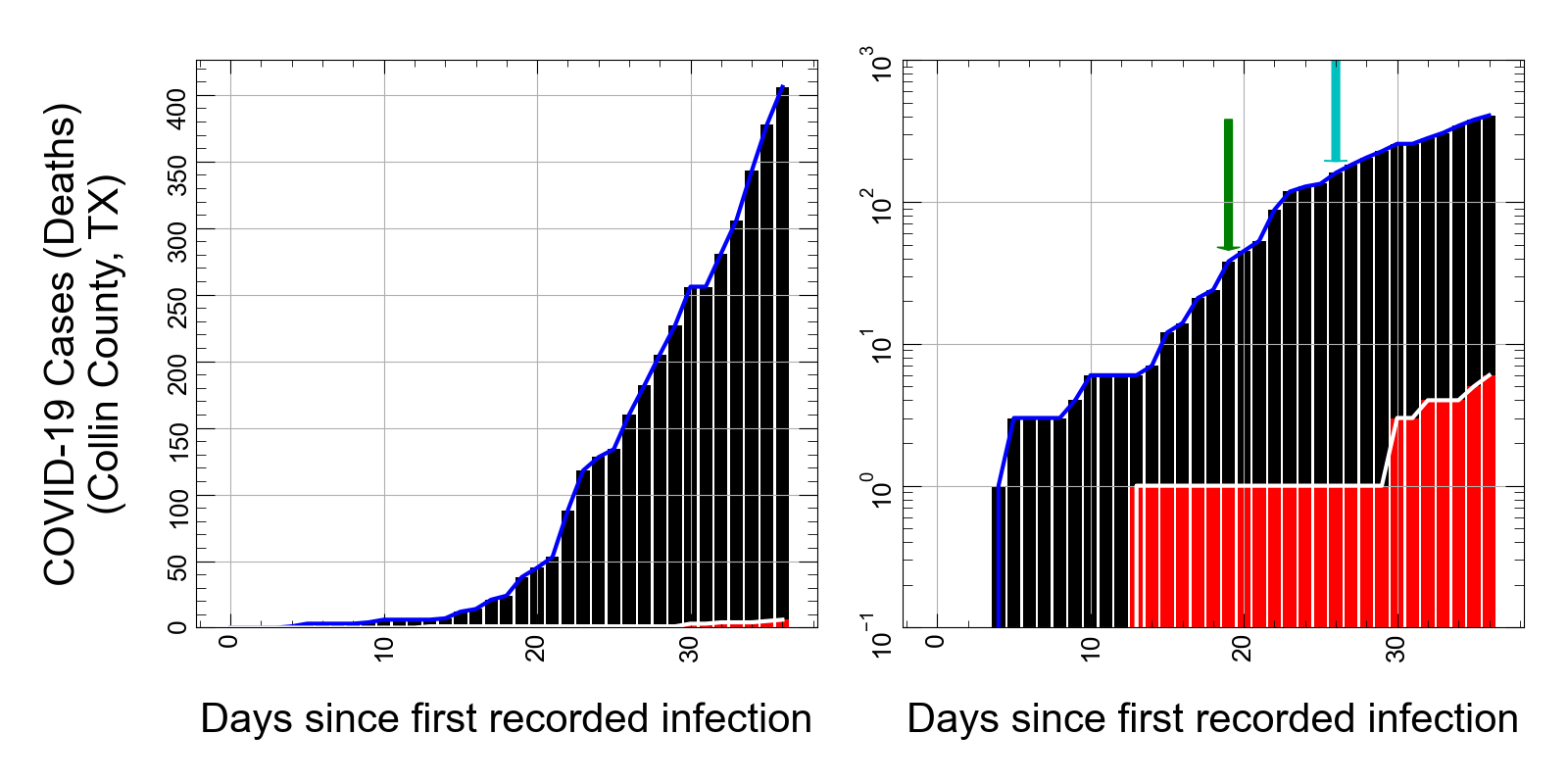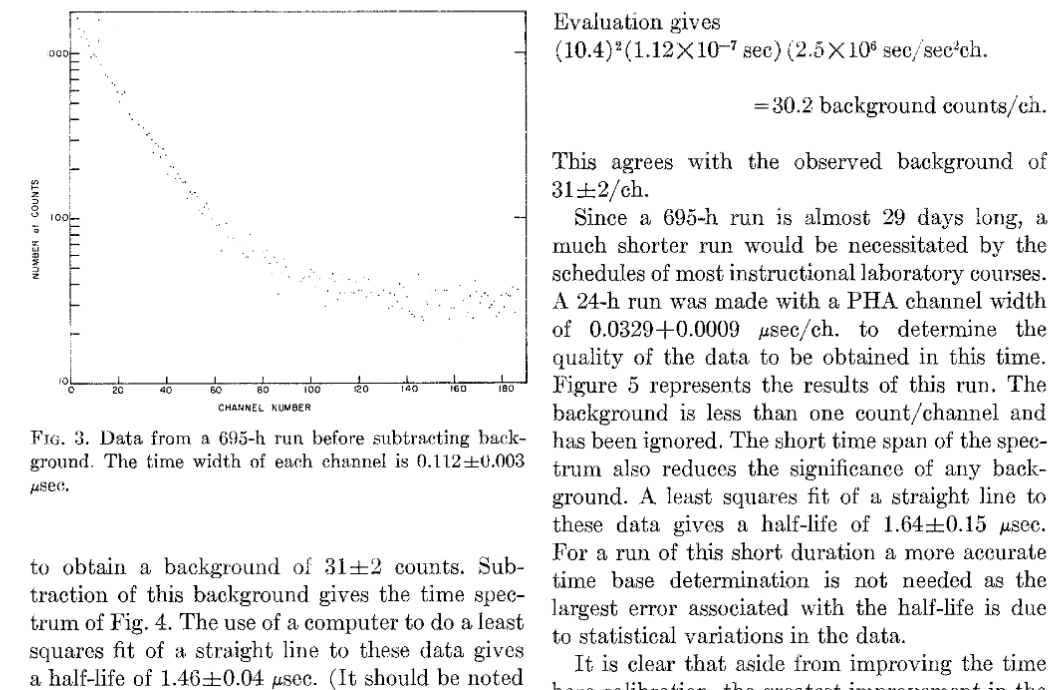In this, the second in a series of short essays on the known fundamental building blocks of our universe, I will introduce you to a colorful character that has played an ever-evolving role in physics: the *muon*. In units of the electron mass (which I shall here denote me), the muon has a weight of 207 times me, or 106 MeV/c2 [1]. The strange thing about the muon is that *in every other respect, it is identical to to the electron*.
The story of the enigmatic muon begins in the first few decades of the twentieth century. The stunning experiments of Ernest Rutherford, J. J. Thompson, and James Chadwick had revealed the structure of the atom. Prior to their painstaking work, the atom was believed to be a singular and fundamental object that came in dozens of shapes and sizes. This complexity, however, was determined to be the result of the simple binding of protons and neutrons (forming the atomic nucleus) and electrons (electrically bound to the protons in the nucleus and “orbiting” them). The previous zoo of atoms was reduced to simple combinations of three building blocks. As I’ve told many tour groups at the Stanford Linear Accelerator Center, this was the first and last time we beat out the Greeks for the minimum number of universal building blocks. Greek philosophers posited four such elementals: earth, air, water, and fire. The experiments of the early twentieth century gave us but three: protons, neutrons, and electrons.
This bliss of minima was not to last. In the 1930s, and shortly after the discovery of the neutron by Chadwick, the puzzling phenomena collectively called “cosmic rays” gave us a new contractor in the cosmic construction site: the muon. It was observed first by Carl D. Anderson and his student, Seth Neddermeyer, who were studying the composition of cosmic rays using cloud chambers [Riordan]. The muon was seen to have the same electric charge as the electron, but its mass was much larger (measured by immersing the cloud chambers in a magnetic field) and it penetrated thick slabs of material, whereas electrons could not. In addition, the muon did not live indefinitely, as the electron did. Once produced, it lasted only 2.2 millionths of a second, which was why it hadn’t been observed before. The brilliant physicist, I. I. Rabi, was heard to exclaim upon learning of the muon’s discovery, “Who ordered that?” The muon wasn’t in the atom, and it didn’t seem to fit the elegant pattern of three fundamental building blocks arrived at by Rutherford, Thompson, and Chadwick.
Originally, Anderson and others named this particle the “mesotron” (“meso” is Greek for “middle” or “intermediate”) out of the belief that it was the mediator in the atomic nucleus responsible for the short-distance, strong binding of protons and neutrons. It had been Hideki Yukawa who, a year earlier, predicted that a particle of mass 100 MeV/c2 was needed to explain one mechanism by which this binding occurs. Having found such a particle, it was natural to make this initial connection. However, the fact that this particle could pass through thick slabs of metal untouched suggested it wasn’t the strongly interacting particle needed to explain the tightly bound nucleus. It simply wasn’t “talking” to nuclei enough to be the candidate for the strong interaction.
When the real candidate for Yukawa’s hypothesis was discovered in 1947, 11 years after the discovery of the muon, the identity of the mesotron became a little clearer. The team, led by Cecil F. Powell, that discovered the mediator in the nucleus gave us the modern naming convention for the muon, which was short for “mu-meson”. I will discuss in a later article the “pi-meson”, or *pion*, which Powell discovered and which was determined to be the strong actor in the nucleus.
The muon is now understood to be the electrically charged particle in a “second generation” of what we call “leptons”. The word “lepton” derives from the Greek λεπτόν, meaning “small” or “thin” [Lepton]. The electron is also a lepton, the lightest one known with electric charge. The muon is the second-heaviest known charged lepton, and has been classified into the “second generation” of leptons. As noted by Anderson, it interacts only weakly with matter and does not participate in the strong interactions that hold the nucleus together. Therefore, the name “muon” is actually a misnomer, since it is short for “mu-meson”; mesons are **strongly** interacting particles, and the modern name is a historical hold-over from Powell’s work. One could, I suppose, rewrite history and make a modern argument that “muon” now stands for “mu-lepton”.
The muon plays many important roles in modern particle physics. First, it is a tool that gives us insight into the inner workings of nature. Muons are always targeted for identification at particle detectors, since they can often be the results of heavy, exotic particle decay. Muons are also a signature used to study the properties of the mysterious *neutrino*, which I will discuss in three future articles (one for each known neutrino). Second, the muon is a heavy particle and thus we believe it can give us insight into the origin of mass. Mass, the “solidity” of energy expressed in E = mc2, is a phenomenon whose origin is still a mystery to modern physics. Although there are many theories about its origin, the most supported being the Higgs theory of spontaneous symmetry breaking, there is no direct evidence for any of them. Finally, the muon is envisioned as the next generation of particles to be accelerated and collided by particle physics. The technical challenges inherent in building such a “muon collider” are many and still unsolved, but in the distant future we may collide muons as regularly as we now do electrons and protons.
The muon still has many roles to fulfill in science, and although it has yielded many secrets there are many questions left attached to its nature. Why is it so alike with the electron, except in mass? Why does it have that specific mass at all? Who did order it? Order up!
.. [1] MeV are “Millions of Electron-Volts”. The electron has a mass of 511 keV, or 0.511 MeV.
.. [Riordan] Riordan, Michael. “The Hunting of the Quark: A True Story of Modern Physics”.
.. [Lepton] “http://en.wikipedia.org/wiki/Lepton”:http://en.wikipedia.org/wiki/Lepton
Other essays in the series, “Your Universe”.



